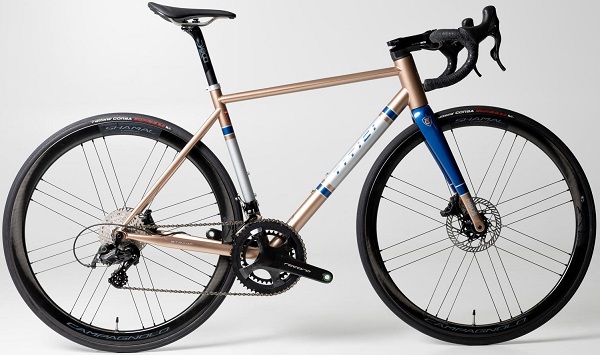
Steel Road Bikes: Technical Analysis and Contemporary Rediscovery
Steel Road Bikes: Technical Analysis and Contemporary Rediscovery
An In-Depth Look at Steel Frames: Properties, Advantages, and Their Role in Modern Cycling.
Road bikes with steel frames, once the standard, are experiencing a renewed interest in the contemporary cycling landscape. This phenomenon is not merely linked to a retro aesthetic but also to inherent technical properties that make them competitive in specific market niches.
1. History and Materials
Steel was the dominant material for bicycle frames until the 1980s, before the advent of aluminum, titanium, and carbon. The most common alloys used are:
Carbon Steel: Economical and robust (e.g., Hi-Ten), but heavy and less performant.
Cr-Mo Steel (Chromium-Molybdenum): Alloys like Reynolds 531, Columbus SL/SLX, Tange, offering an excellent strength-to-weight ratio, allowing for thinner, lighter tubing. Molybdenum enhances weldability and strength.
Stainless Steel: Alloys such as Reynolds 953, XCr, KVA MS3. These offer corrosion resistance and competitive weights, approaching titanium. They are more expensive and complex to work with.
Production primarily involves TIG (Tungsten Inert Gas) welding, brazing (lugged or filleted), or sometimes even bonding techniques.
2. Technical Advantages
Despite the introduction of lighter materials, steel maintains specific advantages:
Comfort (Compliance): Steel possesses greater elasticity compared to high-stiffness aluminum or carbon. This translates into a better ability to absorb road vibrations and imperfections, offering superior comfort over long distances and on uneven surfaces.
Durability and Robustness: Steel is extremely resistant to fatigue and impacts. A well-built steel frame can last for decades. Any damage (dents, minor cracks) is often repairable, unlike carbon which typically requires complex repairs or replacement if damaged.
Handling and Stability: Steel's flexible properties can contribute to a "lively" and predictable ride quality, with good stability, especially on fast descents and wide corners.
Customization: Steel is a relatively easy material for artisans to work with. This allows for high customization of geometries and construction details (integrated cable routing, bag mounts, etc.), making it ideal for bespoke cycling.
Aesthetics: The clean, slender aesthetics of steel tubes, especially in lugged constructions, are appreciated by many for their classic and timeless appeal.
3. Disadvantages and Considerations
Weight: Historically, steel's main disadvantage has been its weight compared to high-end carbon or aluminum. Even the most modern and lightweight alloys struggle to drop below 1500g for a road frame (excluding fork and components).
Corrosion: Without adequate internal and external protection, steel is susceptible to rust. Modern paint finishes and internal treatments (e.g., e-coating) significantly reduce this risk.
Sprint Stiffness: Steel frames can be perceived as less "laterally stiff" compared to high-performance carbon frames, especially during sprints or explosive accelerations. However, modern tube profiling techniques and the use of advanced alloys have narrowed this gap.
4. Modern Applications
Today, steel finds its place in various applications:
Gran Fondo/Endurance Bikes: Where long-distance comfort is a priority.
Commuter/Urban Bikes: For their robustness and durability.
Touring/Bikepacking Bikes: Thanks to their load capacity and repairability.
Gravel Bikes: Comfort and robustness are ideal for unpaved routes.
Custom Bikes: For those seeking a unique, tailor-made bicycle with specific characteristics.
The rediscovery of steel in modern cycling reflects an appreciation for durability, comfort, and customization, positioning it as a valid alternative with a distinct identity compared to composite materials.
